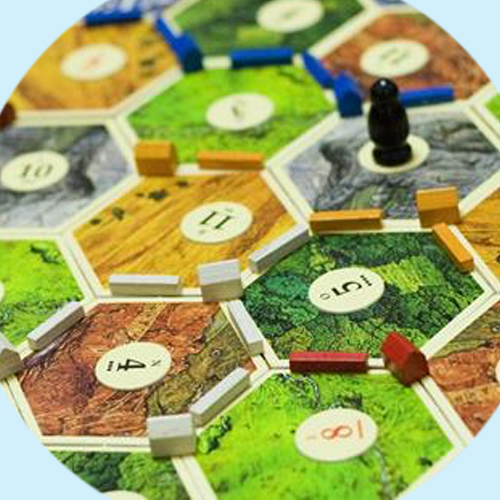Learning Game Design: Game Goals and Dynamics

This post focuses on Step Two of the learning game design process: Get Familiar with Game Terminology and Elements and How to Use Them. Before you can design a good game you need to be able to craft game goals, select game dynamics, create strong game mechanics, and choose appropriate game elements. Today, I’ll focus on two things: game goals and game dynamics—and how they link together. Here’s a quick review of the 5-step process to design a learning game:
- Play games; evaluate what you are playing
- Get familiar with game elements and how to use them
- Think about the learning first, then the game
- Dump ADDIE and go Agile instead
- Playtest. Playtest. Did I say playtest?
Game Goal
The game goal is a description of the object of the game. Or rather, what you need to do to win the game. These are all game goals associated with learning games we’ve created:
- Earn topic mastery across all topics and become a Knowledge Guru.
- Achieve territory sales of $700K and maximize customer satisfaction.
- Build and test a bridge that meets all stated specifications within 45 minutes.
- Get all players out of homelessness within 3 months’ time.
- Get everyone off of the elevator in as few moves as possible. (This is a brand new one for a game we have under development now.)
What to think about when creating a learning game:
- The game goal isn’t the same as a learning goal or a learning objective. For instance, in the elevator game (Goal 5 above), the learning goal is to be able to identify the tasks associated with the 5 steps of incident investigation. We’re using a game in which you have to get everyone off the elevator to help people learn tasks and steps.
- If your game isn’t fun, take a look at the game goal. Is it really a game goal or just a description for how to complete a learning activity? (Match tasks and steps is an example of a learning activity.)
Game Dynamics
You need to be able to recognize and select from different game dynamics. The game dynamic can actually BE the game goal, or the means by which players achieve the goal. A game can focus on a single dynamic or combine a couple of different ones. Common game dynamics include:
Race to the finish
If you use this game dynamic in your game, then you have players competing against each other or against the game system to be the first one to finish a task, reach a destination, hit a specific target, etc. Milton Bradley’s Game of Life is a race to the finish game. MarioKart is a very literal example of a race to the finish game. It’s a common dynamic and it’s pretty easy to design games that use it.
Collection
In collection is the dynamic, then the game goal is achieved by collecting one or multiple things. Knowledge Guru uses a collection dynamic. Players have to collect Topic Mastery badges. Once they get all of them, they become Knowledge Gurus. Trivial Pursuit is a combination of Collection and Race to the Finish: first you have to collect a set of colored chips and then you have to be the first player to make it to the center circle and correctly answer a final question.
Territory Acquisition
In this dynamic you are trying to acquire territory, land, or real estate. Risk is a classic example of this type of game. Monopoly is a game that combines Territory Acquisition and Collection dynamics together.
Solve
Games that use this dynamic require players to solve puzzles or problems. Players are trying to figure something out. The board game Clue uses the Solve dynamic. Adventure-style games (such as Machinarium) use this dynamic as well.
Rescue or escape
This dynamic is used a lot in adventure games where you have to get to a treasure and then get out of a castle, off an island, etc. Forbidden Island combines collection (getting four treasures) with escape—get off the island before it sinks.
Alignment
In this dynamic, you have to get things in order. Many puzzle games use this dynamic by having you get all colors or shapes in a certain order to win the game (think Bejeweled).
Construct/Build
The game of Sims uses this dynamic. Your goal is to build things. Minecraft also uses this dynamic.
Capture
Your goal in Capture games is to capture something that belongs to your opponent. Checkers is about capturing your opponent’s checkers. Capture the Flag is literally about capturing the opposing team’s flag.
What to think about when creating a learning game:
- The game’s “fun” is partly dictated by how engaging the players find the dynamic you’ve selected. When you are creating initial prototypes ask yourself, “How would the game change if I changed the dynamic from X to Y?” (e.g. from Race to the Finish to Capture) Then try it and see what happens.
- Sometimes a dynamic will logically align with a learning goal. Think about whether this may be true for your project and leverage dynamics that make sense.
Summary
Make sure you distinguish between game goals and learning goals. Get familiar with plenty of different game dynamics, and think about how you can incorporate different dynamics into your learning games. Experiment with blending a couple of dynamics together. Find out what happens if you change a dynamic entirely.
If you design learning games please feel free to comment and share. I’d love examples and discussion!



